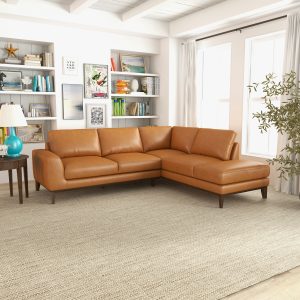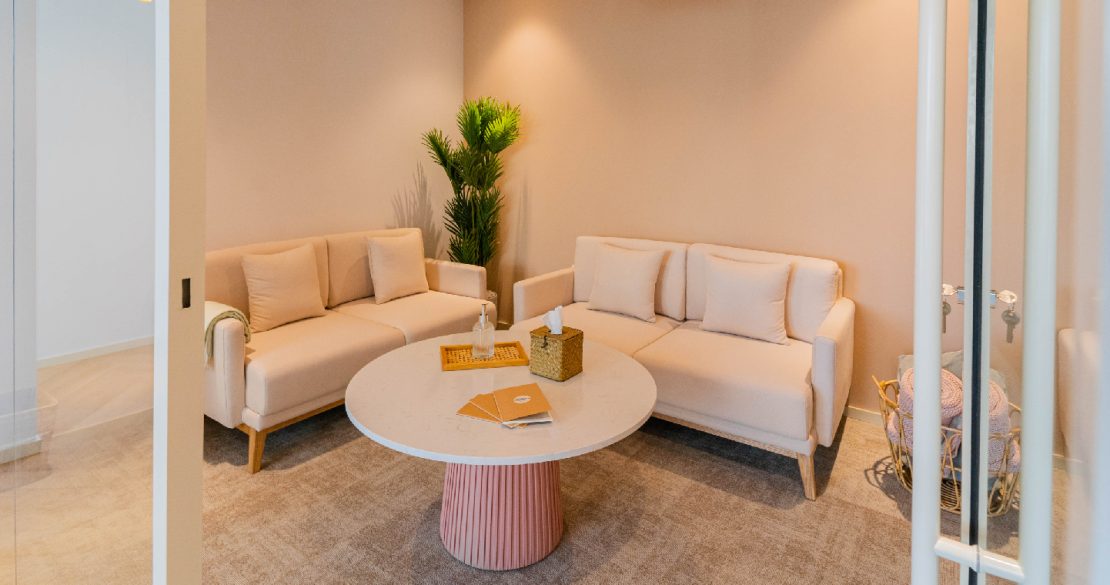For years now, employees have been looking for more work-life balance. Studies have shown that the addition of wellness spaces and activities in the workplace have improved overall employee satisfaction – and productivity. In response, employers are starting to provide spaces in the workplace that allow employees to focus on their wellness when necessary throughout the workday.
There are several elements that must be considered while designing the perfect wellness space for your company and its employees.
Table of Contents
What is a Wellness Room?
Why Provide a Wellness Room?
The Rise of Work From Home
Considerations for Your Wellness Room
Sensory
Comfort & Ergonomics
Biophilic Elements
Placement
Make More Than Just a Room
Working with Limited Space
Final Thoughts
What is a Wellness Room?
Also known as a well-being room, the room is a dedicated space within an office building where employees can go to “switch off.” They provide a break from the office environment and an alternative to the communal break room. While the communal break room is a place to connect on a more personal level with coworkers, a wellness room emphasizes privacy and defined boundary between the office and a place to relax. Make sure your wellness includes a tech-free atmosphere to encourage more relaxation.
Why Provide a Wellness Room?
We could throw gobs of statistics and facts, but in short, it’s needed. Many workers report concerns about their emotional well-being, with around half of surveyed employees admitting to feeling stressed “always” or “often” while at work. Offering a wellness room at the workplace has been found to reduce those occupational stress levels.
The Rise of Work From Home
Home-based jobs have existed for decades. While these didn’t necessarily extend to jobs where face-to-face contact is necessary for productivity, 2020 saw a number of people switch from in-office to work from home (WFH) when offices and other public places shut down. Companies turned to online video calls, as well as email and text to keep teams in the loop and able to interact with each other to get the job done.
Even as companies continue to return to the office environment, many have found that the WFH model, or a hybird where employees are allowed to work from home as well as come into the office, has offered an uptick in productivity as well as employee health and well-being. The WFH model allows employees to step away from their workspace, disengage, and relax, then come back refreshed and ready to continue the work day.
Considerations for Your Wellness Room
A wellness room is more than a separate room in an office building away from the office environment. Many factors go into designing a good wellness space, including sensory, ergonomics, and natural elements.
Sensory
Sound, light, and color are at the top of the list. First and foremost, make sure to soundproof the room. It promotes privacy as well as dampens external noise. In addition to soundproofing, consider white noise machines, which have been proven to promote relaxation and a quiet mind.

When it comes to light, make sure it can be controlled. Dimmable light switches and blackout curtains or blinds allow occupants to concisely control the amount of natural and artificial light. Offer colored lighting, combining color and light in one to create a more detached and relaxing environment.

Color plays a huge role when it comes to influencing mood. Using muted colors and pastel shades creates a softer, relaxing environment. Colors with the greatest influence on calmness include:
Purple: often associated with meditation. It’s been said that the combination of meditation and purple lighting creates and even greater calmness.
Green: The color can mimic the effects of biophilia and create a natural atmosphere. It’s been shown that adding natural elements including plants and their vivid green color, offers the calming effects of being outside in nature.
Blue: identified at the most relaxing color on the spectrum, it is most often associated with the sky and ocean – nature.
Comfort & Ergonomics
Say the word “wellness” and people often think of well-being and stress reduction, but it’s more than that. Comfort is a major piece of the puzzle, especially due to its link between physical and mental health. Physically and mentally healthy employees have better attendance as well as higher productivity. Providing an environment that allows this through ergonomics is key for an office wellness room. Ergonomic furnishings have been designed specifically for comfort and efficiency while you work. When looking for ergonomic furnishings consider furnishings that:
– Seating that supports back, neck, and shoulders
– Seating that is adjustable to different heights
– Height-adjustable desks (or different desk options, like standing desks)
Good ergonomic furnishings should support different body types and needs. Comfort is not a one-size-fits-all topic.

Of course, these are office furnishings. When it comes to the furnishings in your wellness room, choose armchairs, sofas, and recliners that offer both comfort and support so workers can completely relax without slumping or causing stress on posture.
Biophilic Elements
Biophilic design, or biophilia, is a concept that increases occupant connectivity to the natural environment through the use of direct and indirect nature, space, and place conditions. The word is roughly translated from Greek as love (philia) of life (bio). It offers health, environmental, and even economic benefits.
Humans have an instinctive need to connect with nature, and incorporating plants in room design not only provides a cleaner environment but offers that connection to nature we all crave. Having plants around the office, and in your wellness room, improves air quality, reduces dust levels, and keeps humidity within a comfortable range.

While these physical health benefits shine, biophilia impacts more than just physical health. Reports show offices with natural elements are 6% more productive than those without. Adding plants to the workplace reflects a jump of 15% in employee well-being, both stats provided by a Human Spaces Report.
In achieving biophilic design, greenery is the most obvious addition to make, since nearly 60% of offices have no plants whatsoever. Biophilic design also focuses on natural light whenever possible, since it has been found to increase happiness and mood in workers.
Placement
Now that you have an idea of what should go into your wellness room, let’s talk about where it should be. Don’t place your wellness room in a central area. This may tempt employees to use them for regular breaks, or it may interrupt the flow of traffic through the office and cause a disturbance to regular business. Consider tucking it away from everything else, to provide the most quiet and calm, as well as privacy.
Make More Than Just a Room
These are just some guidelines on how to go about making a wellness room for your office. You can follow it like a step-by-step set of instructions, but we’d prefer if you use it as a guide in conjunction with feedback from your employees. This will help you tailor the room to the needs of your employees. If they’re involved from the start, they’ll be more interested in taking advantage of something they’ve had a hand in creating. Also, it gives you a chance to work with employees and listen to their needs about other aspects of the workplace environment and culture.
When asking for feedback about the room, ask about what other changes or improvements they’d like to see around the office. A wellness room won’t cure work-related stress from some of the most common causes like:
– negative office politics
– lack of communication,
– performance of other team members
– customer satisfaction
– long work hours
– tension with management
– concerns about personal performance
Working with Limited Space
Not every office is large enough to accommodate the space for business and a large room for wellness. Just because you don’t have a separate room doesn’t mean you can’t design wellness into the office. Create spaces completely detached from working areas with privacy screens, booths, or creating zones highlighted by color and light without taking up much square footage.
If your office is too cozy for even those, many of the ideas discussed her can be integrated into the overall office design, including furnishings, lighting, and biophilic elements.
Final Thoughts
Whether your company is big or small, having a happy and less-stressed workforce can lead to big gains for everyone involved. Creating a place in the office where employees can go to unplug and recharge for a short time is a fantastic way to lift employee spirits and productivity, and create the kind of environment people want to work in.
We at Realty Asset Advisors can help you add create the wellness room or space you and your employees desire.
Contact us today!










